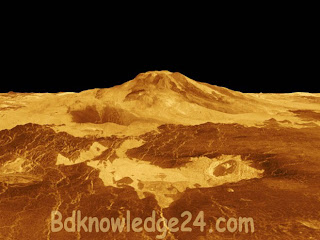In my previous post I written about the Uranus,
now I'm getting ready to write about the Mercury which is a planet of
solar system. In my post you will get more info about the Mercury including
diameter, moon, distance from sun etc.
It is the planet nearest to the earth
Diameter
|
4,849.6 Kilometer
|
Moons
|
None
|
Avg. Distance to Sun
|
57.6 million KM
|
Time to Orbit the Sun
|
88 days
|
Mean Distance from the sun(million km)
|
57.9
|
Equatorial Diameter(km)
|
4,880
|
Period of revolution round the Sun or Sideral rotation
|
88 days
|
Period of rotation on own Axis or Axis Rotation
|
58 days 15hr and 30 min 34 sec.
|
No. of Satellites
|
0
|
Mass: Time of Earth
|
0.055
|
Mean Temp, of Surface
|
+3500C
|
Other Details
|
Nearest to the sun and fastest planet
|
Qns: Who is Mercury in mythology?
Ans: God of commerce
Qns: What is the minimum surface temperature of Mercury?
Ans: 350oC
Qns: What is the maximum surface temperature of Mercury?
Ans: 427oC
Qns: What is the tilt of axis of mercury?
Ans: 0
Qns: Which spacecraft first visited Mercury?
Ans: Mariner 10
Qns: Which theory correctly predicted the motions of Mercury?
Ans: General Theory of Relativity.
Qns: Who determined that Mercury must be tidally locked to the Sun?
Ans: Giovanni Schiaparelli
Qns: What is Mercury rotation period around axis?
Ans: 58.65 days
Qns: What is the length of a year of Mercury?
Ans: 87.969 days.
Qns: Mercury is named after the Roman God of :
Ans: Trade
Qns: The greatest temperature on Mercury is near-
Ans: 700 K
Qns: Which Mariner probe visited Mercury?
Ans: Marnier 10
Qns: Mercury’s greatest land feature is termed –
Ans: the Caloris Basin
Qns: Water is suspected around -
Ans: The North Pole
Qns: Mercury’s magnetosphere is generated by its-
Ans: Core
Qns: Mercury has-
Ans: a mostly molten core
Qns: Mercury’s magnetic field was discovered by -
Ans: A space probe
Qns: Mercury has the oddity of -
Ans: A day longer than a year.




